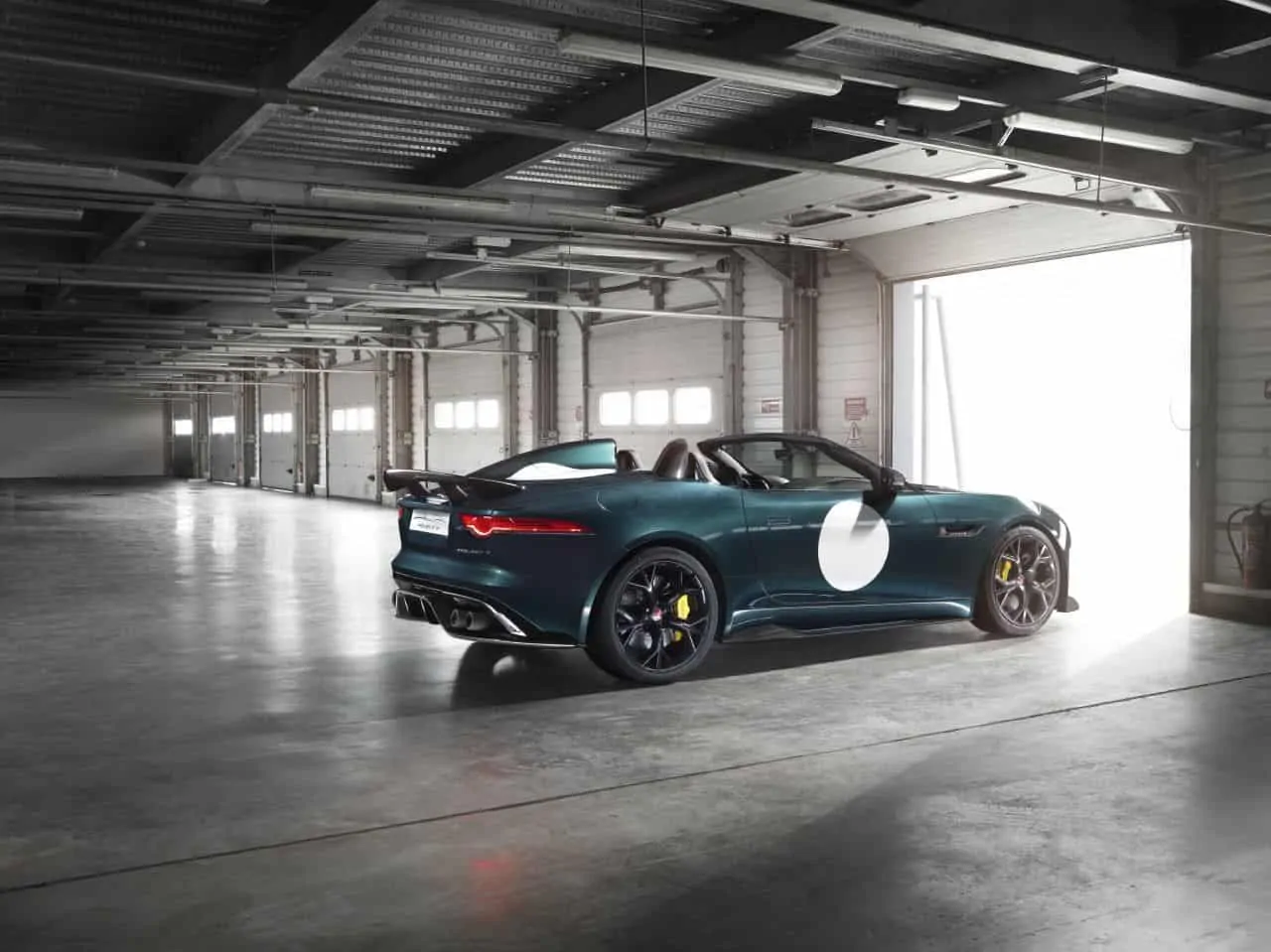Jaguar has announced its intention to bring the F-Type Project 7 show car to life. The two-seat roadster is the first car to emerge from Jaguar Land Rover’s newly formed Special Vehicle Operations unit and will be sold in limited numbers.
The Project 7 began as a pipe dream, a design study that was created as a spare-time experiment that blended Jaguar’s rich racing heritage with its then-new sports car line, the F-Type. Under the direction of Ian Callum, Jaguar’s Director of Design, the sketch — of a single-seater sports car with a swooping profile, muscular stance and cut-down windscreen — went from paper to digital model to the Goodwood hillclimb in just a few months.
“F-Type Project 7 is the perfect example of how, as a design team, we can move quickly with our engineering colleagues to go from concept vehicle to production reality – we’ve pushed the boundaries of what’s possible without losing any purity of form,” says Callum. “Modern, purposeful and with a stance that screams intent, F-Type Project 7 is the perfect contemporary embodiment of the D-type that inspired it.”
It is now set to become the most performance-focused Jaguar ever created.
Making its debut at the 2014 Goodwood Festival of Speed — in the 60th anniversary year of the Jaguar D-type racer that inspired its design — the limited edition F-Type Project 7 has two seats, unlike the show car, and an additional roll-over hoop behind the passenger.
These lightweight, race-inspired, carbon fiber-backed bucket seats, which are finished in a quilted diamond pattern, are mounted low, revising the H-point of the regular F-Type model. Four-point racing harnesses are an available accessory. The interior also features carbon-fiber veneer inserts on the console, an Alcantara steering wheel and bespoke treadplates with the Project 7 logo.
Several exterior design modifications have been made to transform the F-Type into a Project 7. The most noticeable changes are the revised front bumper, white-framed grille (which is now devoid of a central slat), D-Type inspired fairing at the rear, carbon elements around the lower body section, rear spoiler and its 114mm shorter windscreen. Regrettably the cut down windshield won’t make it onto cars in the US market due to stringent safety regulations.
Should you encounter inclement weather, a bimini roof, specially designed for F-Type Project 7, clips on to the convertible header rail and can be folded and stowed in the trunk when not in use.
Power comes from a supercharged 5.0-liter V8 that generates 570bhp and 502 lb-ft of torque driving the rear wheels through an eight-speed semi-automatic. If you like to shift for yourself, the machined aluminum flappy paddles behind the wheel will become your intimate friends. A bespoke suspension tune, carbon ceramic disc brakes and torque vectoring by braking are all standard features.
The Project 7 is said to reach 60mph in 3.8 seconds and a max out at 186mph. Weighing in at 1585kg, it’s also 80kg lighter than a comparable V8-powered F-Type, thanks in part to the carbon fiber seats, rear deck, hood vents, side vent louvers and mirror caps.
Offered in an exclusive run of up to 250 units — all of which will be hand-built by Jaguar Land Rover’s Special Operations team — the F-Type Project 7 will be delivered to its first customers in the middle of next year — just in time to hit the Goodwood festivities again.





















